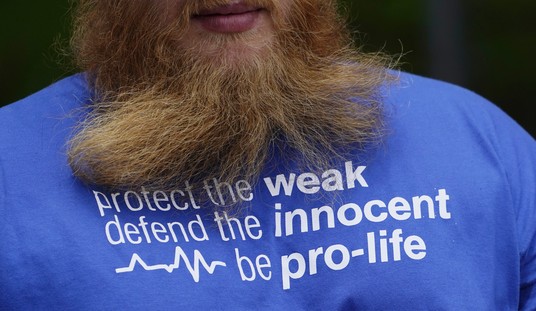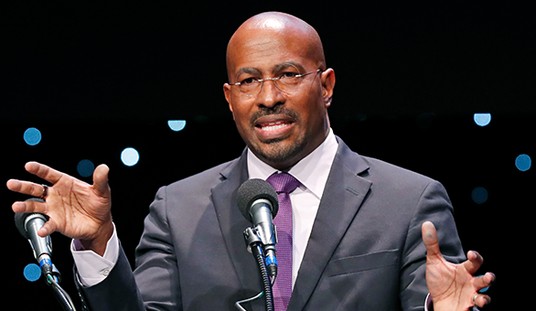At 3:32 p.m., June 13, the Washington Post news alert hit my iPhone. Tim Russert, moderator of NBC’s “Meet the Press,” and Washington bureau chief, had died. My heart ached for his family. The news was shocking and sad, particularly because Russert was so vital and young. He was a good man, with more to offer the world, especially in this presidential race. When reporting Russert’s death, former “Nightly News” Anchor Tom Brokaw noted, “This news division will not be the same without his strong, clear voice.”
Russert was a force in America’s political landscape who could be counted on to ask the hard questions and raise the level of play and engagement of the guests on “Meet the Press.” He was a champion of everyday people and asked questions in their stead. In an age where authenticity is rare, he was the real thing.
Over the past two decades, I met Russert a few times. Last year, when he moderated the debate at the Cooper Union of Science and Art in New York City between former Gov. Mario Cuomo and my dad, former Speaker Newt Gingrich, he used crutches, due to an injury, to enter the stage door. But he walked out on stage and out the front door at the end of the event without assistance. This kept the focus on issues and ideas rather than his injury. Through his action and questions, Russert revealed himself to be a professional, down-to-earth, hardworking man who loved his country. He will be sorely missed.
Denise Grady’s June 17, 2008 New York Times article, “A Search for Answers in Russert’s Death,” tries to explain why a man of Russert’s youth (he was just 58) and apparent good health had died so suddenly. The answer, according to Grady, at least in part, is that Russert’s doctors did not realize how severe his coronary heart disease was because he had neither chest pain nor other symptoms that would have led them to carry out “invasive tests needed to make a definitive diagnosis.” That is also true for half of the men who die of coronary heart disease.
Recommended
While Russert was taking measures to control his risk -- medicine for blood pressure and cholesterol, daily exercise and trying to lose weight -- they were not enough. “Mr. Russert’s cholesterol was not high, and medicine controlled his high blood pressure pretty well,” said Dr. Michael A. Newman, the journalist’s internist. But, he added, Russert was “significantly overweight.”
In the article, Newman noted, “if there’s one number that’s a predictor of mortality, it’s waist circumference. Studies have found a waist of over 40 inches in men and 35 inches in women is a risk factor for heart disease.’”
This focus on waistline is being taken seriously in other parts of the world. Norimitsu Onishi’s June 13, 2008 New York Times article “Japan, Seeking to Trim Waists, Measures Millions,” highlights that country’s campaign to improve their national health by measuring waists.
The Japanese focus began with a language shift from overweight to “metabo” (metabolic syndrome) reflecting a person’s health status rather than weight. “In no time,” writes Onishi, “the scary-sounding condition was popularly shortened to the funny-sounding metabo, and it has become the nation’s shorthand for overweight.” While slight, the linguistics change shifts an individual’s focus from appearance to health.
Japan set its waist limits at 33.5 inches for men and 35.4 inches for women, which are the thresholds, established in 2005 as health risk guidelines for Japan by the International Diabetes Federation. These are lower than U.S. guidelines noted above due to differences in body composition.
According to Onishi, the Japanese government’s goal is to reduce “the overweight population by 10 percent over the next four years and 25 percent over the next seven years.” Tactics include companies and local governments measuring the waistlines of those 40 to 74 years of age annually, with financial penalties for business and local governments failing to meet the target.
So what is metabolic syndrome? The U.S. National Institutes of Health’s Web site states, “Metabolic syndrome is the name for a group of risk factors linked to overweight and obesity that increase your chance for heart disease and other health problems such as diabetes and stroke.”
Five conditions are listed: A large waistline, a higher than normal triglyceride level (or on medicine to treat high triglycerides), a lower than normal level of HDL cholesterol (or on medicine to treat low HDL), a higher than normal blood pressure (or on medicine to treat high blood pressure), and a higher than normal fasting blood sugar (glucose), (or on medicine to treat high blood sugar).
In general, a person with metabolic syndrome is twice as likely to develop heart disease and five times as likely to develop diabetes as someone without metabolic syndrome, according to the NIH.
Almost 25 percent of Americans – 47 million adults -- have metabolic syndrome.
While the Japanese approach may represent too much government intrusion into the lives of citizens, it is time for Americans too to make serious progress in our personal health.
The U.S. Department of Heath and Human Services has set ambitious goals in its 2010 Healthy People Initiative: increase healthy weight adults from the current percentage of 34 percent to 60 percent; reduce the number of obese adults from 34 percent to 15 percent; reduce the number of overweight or obese children and adolescents from 18 percent to 5 percent.
Perhaps the best tribute to the champion of the everyday man who did not flinch from tough questions would be for each of us to ask ourselves and our loved ones those questions about risk. Grab a tape measure and measure. Honest, frank answers, and resulting action might save lives, and one of them could be yours.
























Join the conversation as a VIP Member